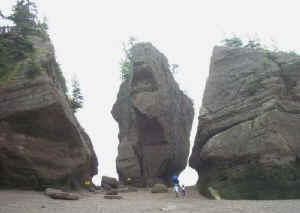|

 New Brunswick
New Brunswick
| On March 14, 2010 the Eastern Native Tree Society
and Western Native Tree Society switched from discussion lists
on Google Groups to a new discussion list in a Bulletin Board
format at:
http://www.ents-bbs.org/index.php
Posts made since the inception of the BBS on March 14, 2010 will
be sorted and archived on the BBS. Click on the link to go to
the equivalent section on the new BBS. This website will
continue to serve as a front end for the ENTS and WNTS groups.
It will continue to serve as a repository of older posts, and
will serve as the host site for special projects and features
that are not well suited for a BBS format. Please visit the BBS
for the latest information and trip reports. |
Field Trips
-
Big Old Red Oak Maquapit
Lake, NB Sept. 21, 2009

- Grand Lake Meadows - Big
Silver Maples New Brunswick August 2, 2009
- Big
Burr Oak New Brunswick August 2009
- Every New Brunswicker has a vested interest on 'what we should do
with the forest'
http://bugleobserver.canadaeast.com/search/article/763520
- Maple, Gagetown, NB April 29, 2009
- Another Big White Pine, Grand Lake, NB
March 10, 2009

-
Sapsucker Holes in Hemlock New Brunswick Jnauary 9, 2009

- Big Eastern Pine
 Jan 2009 Jan 2009
- Canadian
Atlantic Maritime Provinces Gallery
 Randy Cyr
Randy Cyr
- Another Big White Pine
http://groups.google.com/group/entstrees/browse_thread/thread/932f1779d5dc511c?hl=en
 March 10,
2009 March 10,
2009
- Conservation Council of New Brunswick
http://www.conservationcouncil.ca/forestry/forest_growth.html
Tucked away here and there across New Brunswick are remnants of old growth Acadian forest. The Acadian forest is unique to our region of Canada and its old growth is among the most endangered in the country. Until now it lived on in natural refuges where the terrain was too steep or rough for logging equipment, or along rivers and streams where logging is limited.
- New Brunswick Tree and Shrub Species of Special Concern
http://cfs.nrcan.gc.ca/subsite/mx-212/home The
New Brunswick Gene Conservation Working Group was formed in 1997.
The goal of the group is to develop gene conservation strategies for
native New Brunswick trees and shrubs. The first step in achieving
this goal was to identify which species require attention and may
need a gene conservation strategy. This was done by assessing a
number of factors for each species. For example, 1) is the species
rare; 2) is there a serious threat from disease or insect pests that
will impact this species; 3) is the preferred habitat of the species
in great demand for other uses?
|
|